*NURSING > CASE STUDY > NR 506 Week 3 Assignment: Quality Healthcare: Measuring NP Performance (GRADED A) (All)
NR 506 Week 3 Assignment: Quality Healthcare: Measuring NP Performance (GRADED A)
Document Content and Description Below
Running head: QUALITY HEALTHCARE MEASURING NURSE P 1 Quality Healthcare: Measuring Nurse Practitioner Performance Chamberlain College of Nursing NR506NP: Healthcare Leadership... and Policy Quality Healthcare: Measuring Nurse Practitioner Performance Every person should have access to quality healthcare and feel confident in the care they receive. The National Committee for Quality Assurance (NCQA) was formed to ensure the quality of patient care and measurement of patient outcomes with set standards This paper will discuss a performance measure developed by Healthcare Effectiveness Data and Information Set (HEDIS) in which is a performance measurement tool that millions of health insurance companies use (NCQA, 2019). Three patient interventions will be discussed, and information on how a nurse practitioner (NP) would specifically measure the outcomes of the interventions listed. This paper will include how the primary care interventions result in improved patient outcomes and cost savings for the practice. Lastly, this paper will discuss how the interventions resulted in improved patient ratings and a conclusion. Patient Interventions HEDIS has six domains of care in which performance in healthcare is measured. The interventions discussed will be from the domain Effectiveness of Care (NCQA, 2019). The three interventions selected from this domain are under prevention and screenings in which include: breast cancer screenings, cervical cancer screenings, and colorectal screenings (NCQA, 2019). As people age, screenings begin to play a significant role in their life. It is essential as healthcare providers that we make sure our patients are educated about the screenings and the importance of the screenings. Regardless of what the patient is being seen for, it should become a regular part of their assessment to ask them if they have had their screenings. If the patient falls within the age category or is high risk, and they have not had their screenings, it is important that we must get those scheduled for them while they are there. Breast cancer screenings or mammograms should occur every two years, beginning in average-risk women at the age of 40-50 years old and last through age 74 (HRSA, 2017). The Women’s Preventive Services Initiative recommends cervical cancer screening for average-risk women aged 21 to 65 years by getting cervical cytology (pap test) every three years (HRSA, 2017). Evidence of colorectal cancer usually shows signs around 50 years of age, and that is the age of screening recommendation begins for an average-risk adult (Hogstrom, 2018). The screening for colorectal cancer should happen once every ten years if each screening comes back clear, and family history is insignificant of colorectal cancer. After learning about each of these screenings, it shows how important it is that the patients in the practice have been getting them scheduled as they should. Every woman seen in the practice that is age forty and above should be asked about their breast cancer screenings, women beginning at age 21 should be asked about cervical cancer screenings, and women and men 50 years of age and older should be asked about colorectal screenings. If the patients state they have not had their screenings they should be educated about them and scheduled to get it done. The screening questions should all be a part of the patient’s initial assessment as each patient comes into the office for visits. When implementing the interventions listed in practice, we must measure the outcomes as another crucial step. Measuring performance within practice allows an organization to document how care is currently provided and sets the foundation for improvement (HRSA, 2017). A measurement tool that can be used to track patient outcomes from each of the interventions of implementing cancer screenings is the CAHPS patient experience survey (AHRQ, 2019). Each person that is a patient at the practice will get a mailed survey asking if they were asked about their screenings during their visit, if they were scheduled while they were there, and if they were satisfied with the care they received. For each survey, you can download formatted survey instruments, guidance for administering them, and information on analyzing and using the results (AHRQ, 2019). The office could then use the results to measure the outcomes of the interventions implemented. With more education given on the screenings and people are getting them as scheduled they will a better chance at early diagnosis resulting in less costly services. Improved Patient Outcomes Implementing primary care interventions can improve patient outcomes by detecting cancer early on by getting the screenings done by the recommended age and routinely after that. Early detection is vital for life-saving treatment. The consequences of delayed care due to not getting cancer screenings are a lower likelihood of survival, greater morbidity of treatment and higher costs of care, resulting in avoidable deaths and disability from cancer (World Health Organization, 2019). Delayed care results in higher cost due to more testing, treatment, and possible surgeries to take place due to the late detection. Early diagnosis through screenings improves cancer outcomes by providing care at the earliest possible stage and is a significant public health strategy in all settings to make for healthier populations (World Health Organization, 2019). Improved patient outcomes will provide for more money for the practice. Some CAHPS surveys are administered by the Centers for Medicare and Medicaid Services (CMS) as part of their public reporting or reimbursement programs (AHRQ, 2019). Meaning, if hospitals or facilities do not get excellent feedback from the patients on these surveys, the hospital or facility may not get reimbursed and in return, can lose a significant amount of money. Patient Ratings Not only can we measure the interventions through the CAHPS survey, but we can measure the patient ratings as well. Patients want to feel like healthcare providers have gone above and beyond for them during their care. While a patient is at the clinic for routine care, being asked about screenings and scheduling them is going above and beyond for them and their health. In return, the patient will feel better cared for, and patient ratings will improve. Also, with screenings being implemented as they should for each patient makes for a healthier population and better chances of survival. Patients will have increased knowledge and confidence in their care, and the better they will rate the service they were provided. High patient satisfaction scores have been known to correlate with improved health outcomes (Lee, Miller, Daniels, Paine, Gresh, & Betz, 2016). Ideally, assessing patient satisfaction metrics will encourage empathy, communication, trust, and shared decision making in the health care delivery process (Lee et al., 2016). Conclusion The quality of patient care and the measurement of patient outcomes with set standards is an important aspect of healthcare and can play a significant impact on health insurance reimbursement. Making sure the patients get the care they deserve and that meets their standards is so important. The University of Utah Health Care system launched an initiative called Exceptional Patient Experience (EPE) that signifies medical care can only be truly great if the patient thinks it is (Lee et al., 2016). What began as a patient satisfaction initiative has evolved into a model for a cultural transformation that is focused on quality and safety, patient- reported outcomes, and cost reduction (Lee et al., 2016). This paper provides information on one of the six domains of HEDIS, a healthcare performance measurement tool. It includes patient interventions that fall under that domain and a way to measure each of the outcomes. Included are improved patient outcomes, costs savings for the practice, and patient ratings. References Agency for Healthcare Research and Quality (AHRQ). (2019). CAHPS Patient Experience Surveys and Guidance. Retrieved from https://www.ahrq.gov/cahps/surveys- guidance/index.html#targetText=CAHPS%20surveys%20ask%20patients%20to,care %20for%20specific%20health%20conditions. Health Resources & Services Administration (HRSA). (2017). Women’s preventative services guidelines. Retrieved from https://www.hrsa.gov/womens-guidelines-2016/index.html Hogstrom, E. (2018, Mar 18). Health screenings encouraged. Telegraph - Herald Retrieved from https://chamberlainuniversity.idm.oclc.org/login?url=https://search-proquest- com.chamberlainuniversity.idm.oclc.org/docview/2015166834?accountid=147674 Lee, V. S., Miller, T., Daniels, C., Paine, M., Gresh, B., & Betz, A. L. (2016). Creating the Exceptional Patient Experience in One Academic Health System. Academic medicine : journal of the Association of American Medical Colleges, 91(3), 338–344. doi:10.1097/ACM.0000000000001007 National Committee for Quality Assurance (NCQA). (2019). Hedis measures. Retrieved from https://www.ncqa.org/hedis/measures/ World Health Organization. (2019). Cancer. Retrieved from https://www.who.int/cancer/prevention/diagnosis-screening/en/ [Show More]
Last updated: 1 year ago
Preview 1 out of 8 pages
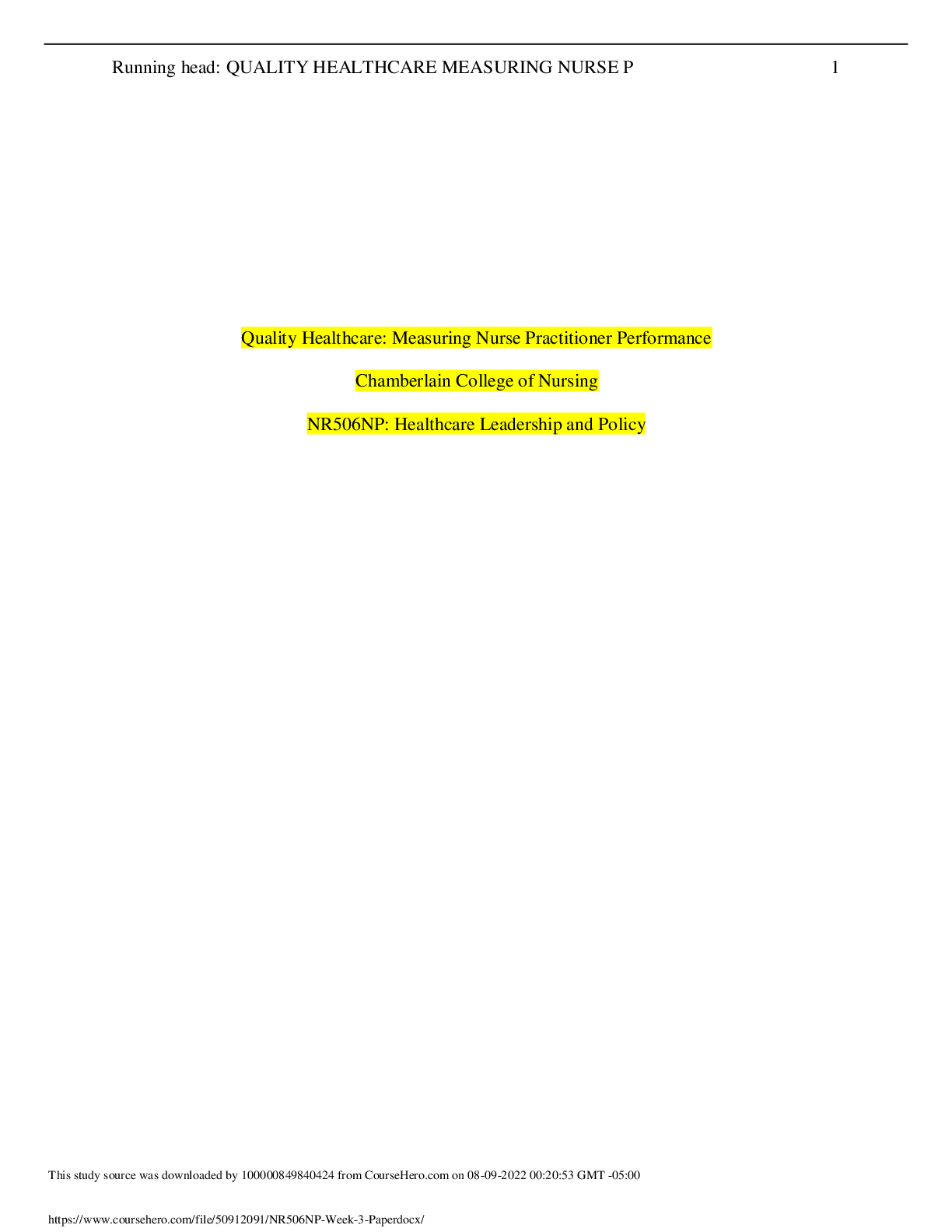
Reviews( 0 )
Document information
Connected school, study & course
About the document
Uploaded On
May 31, 2022
Number of pages
8
Written in
Additional information
This document has been written for:
Uploaded
May 31, 2022
Downloads
0
Views
72
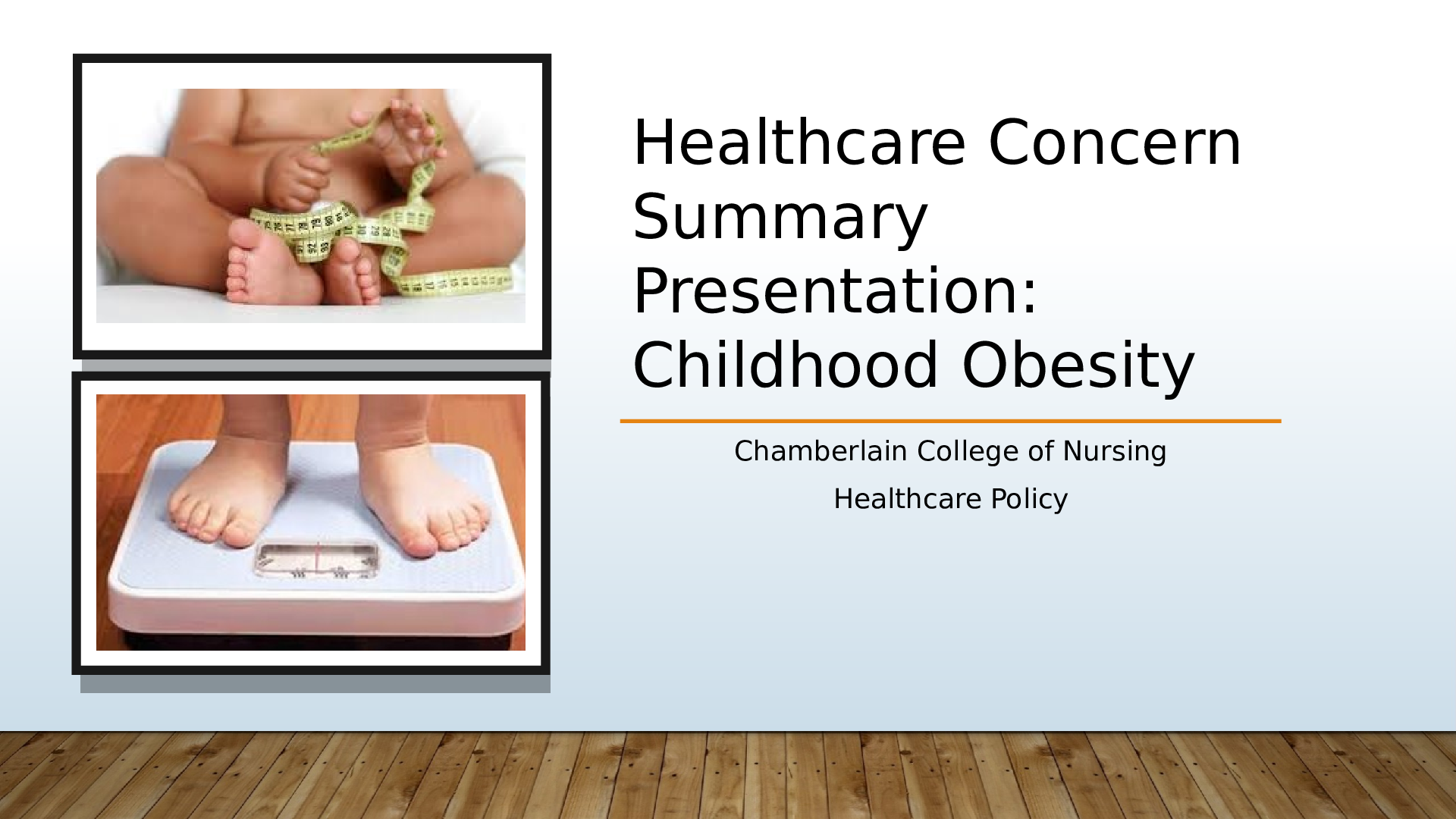



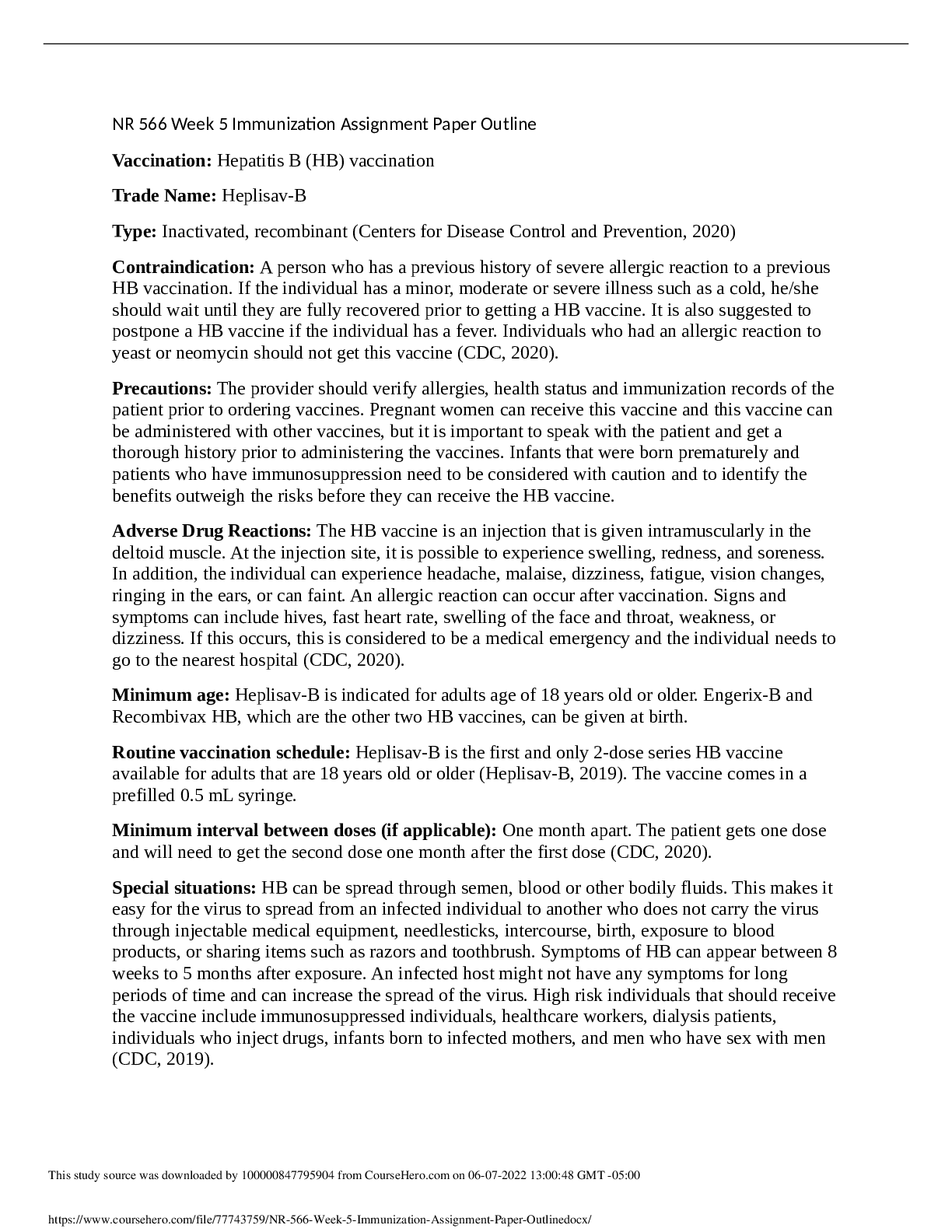

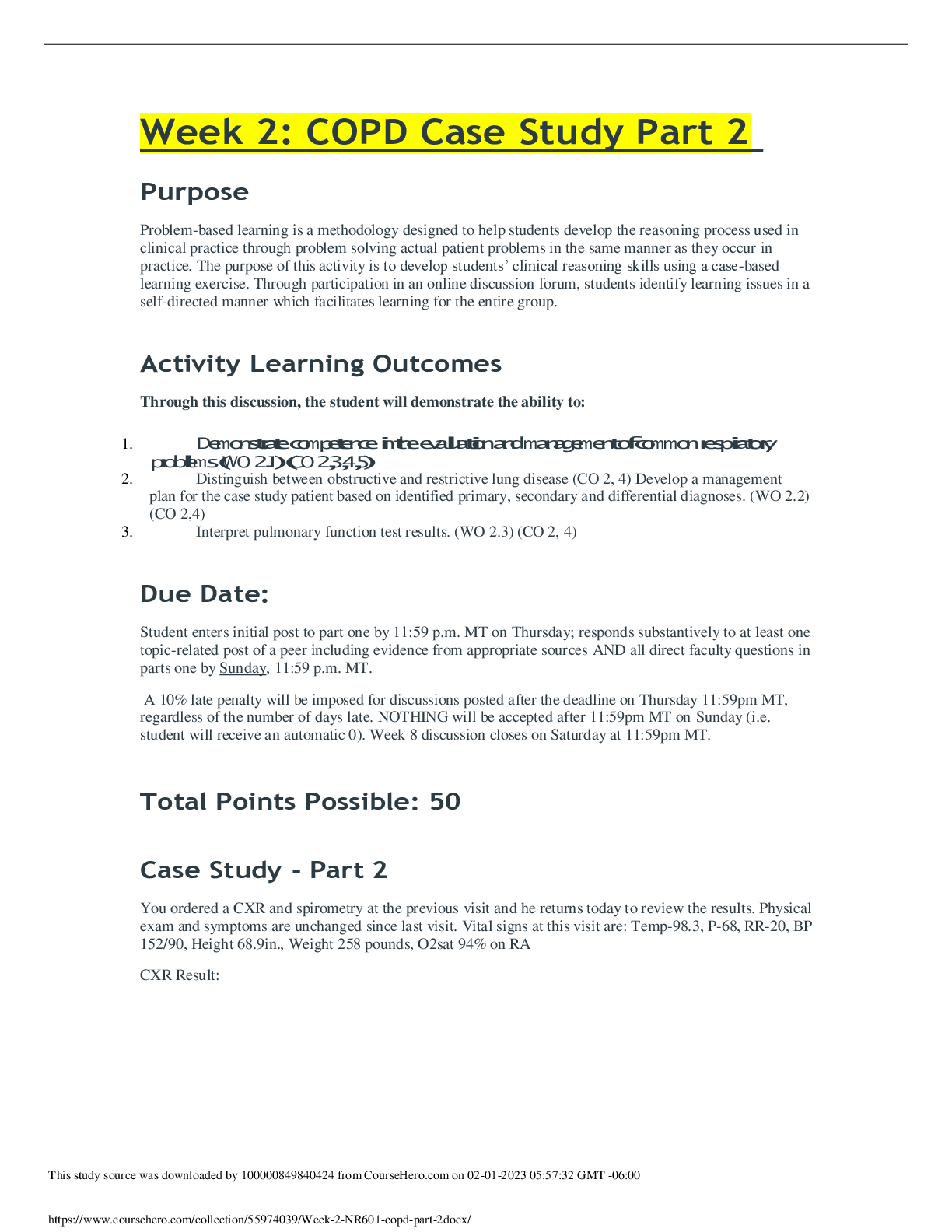

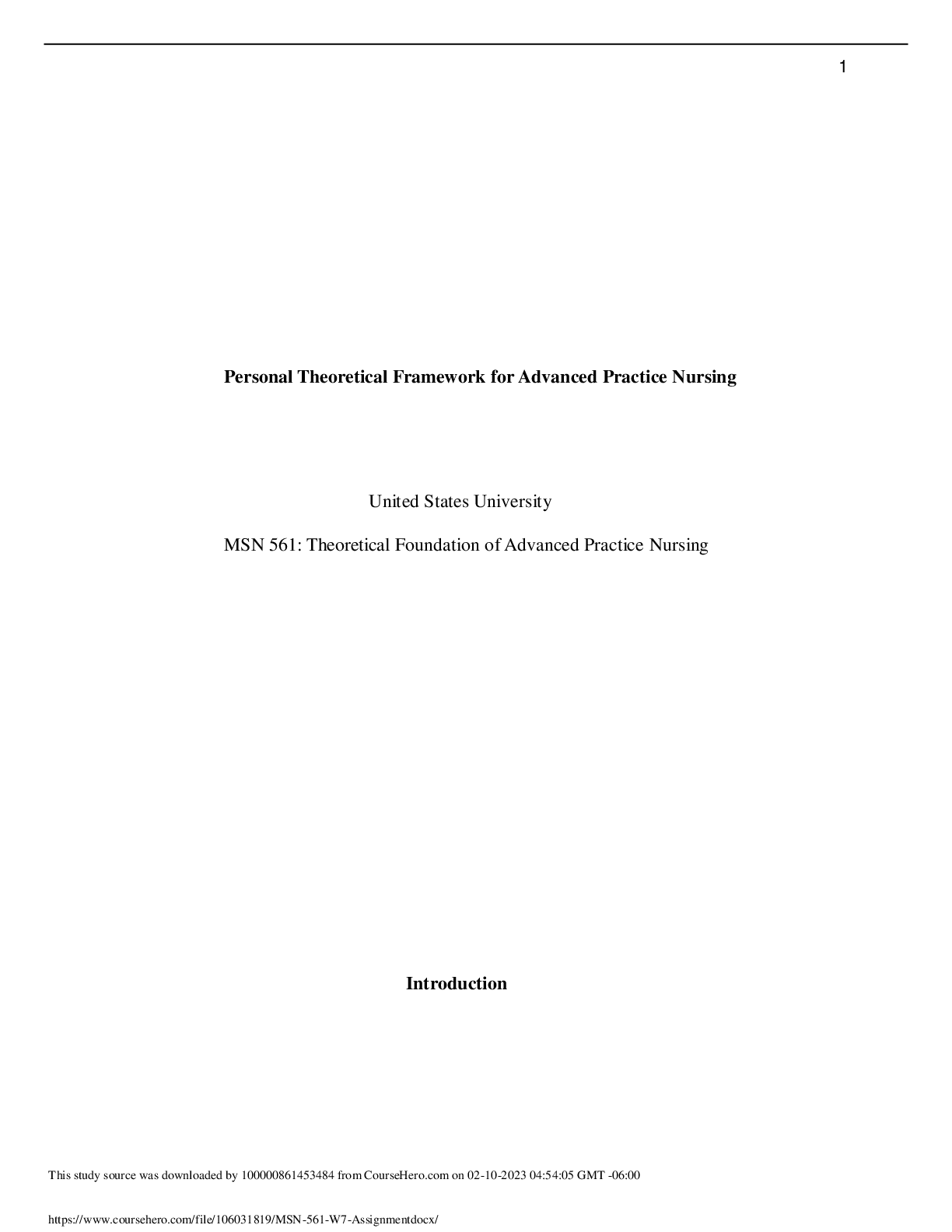
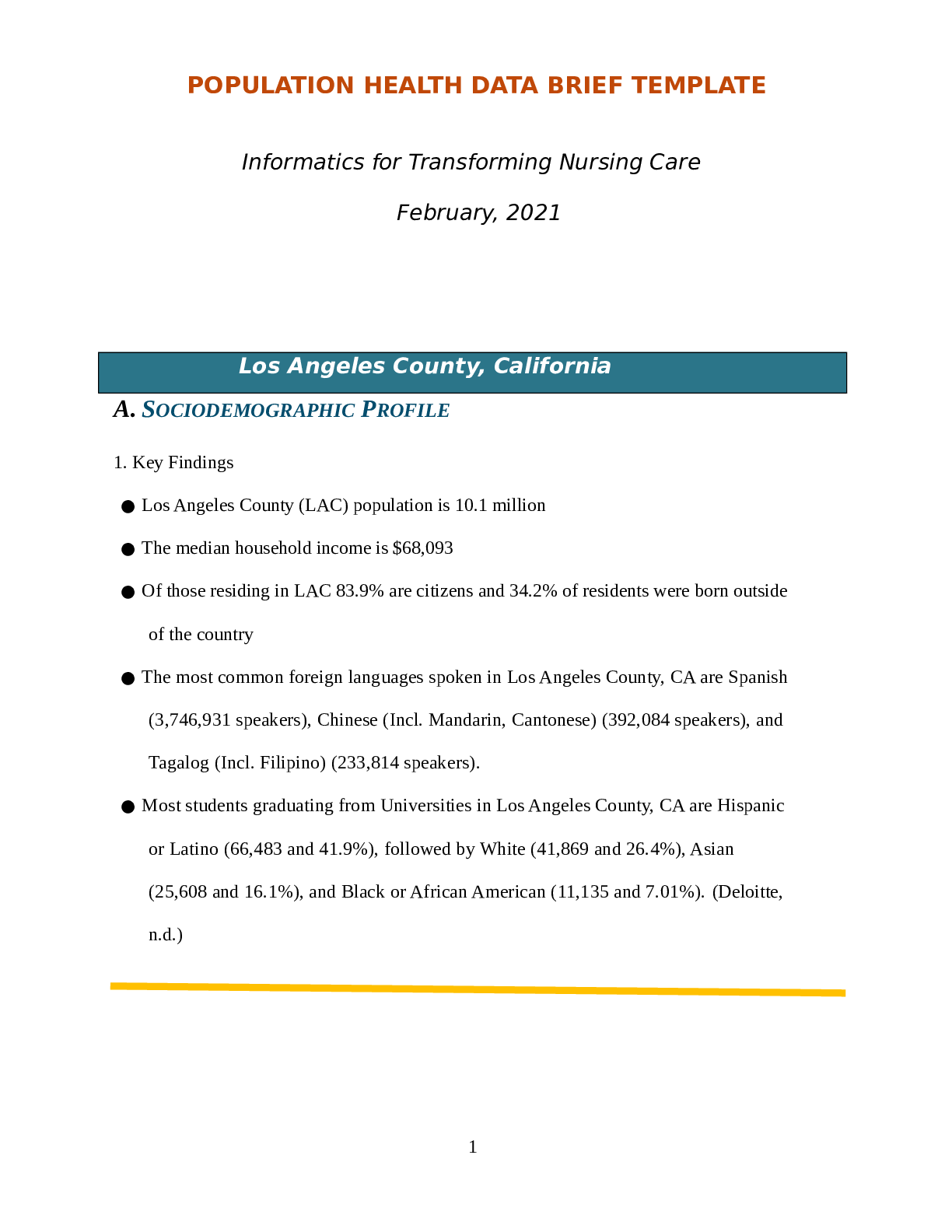

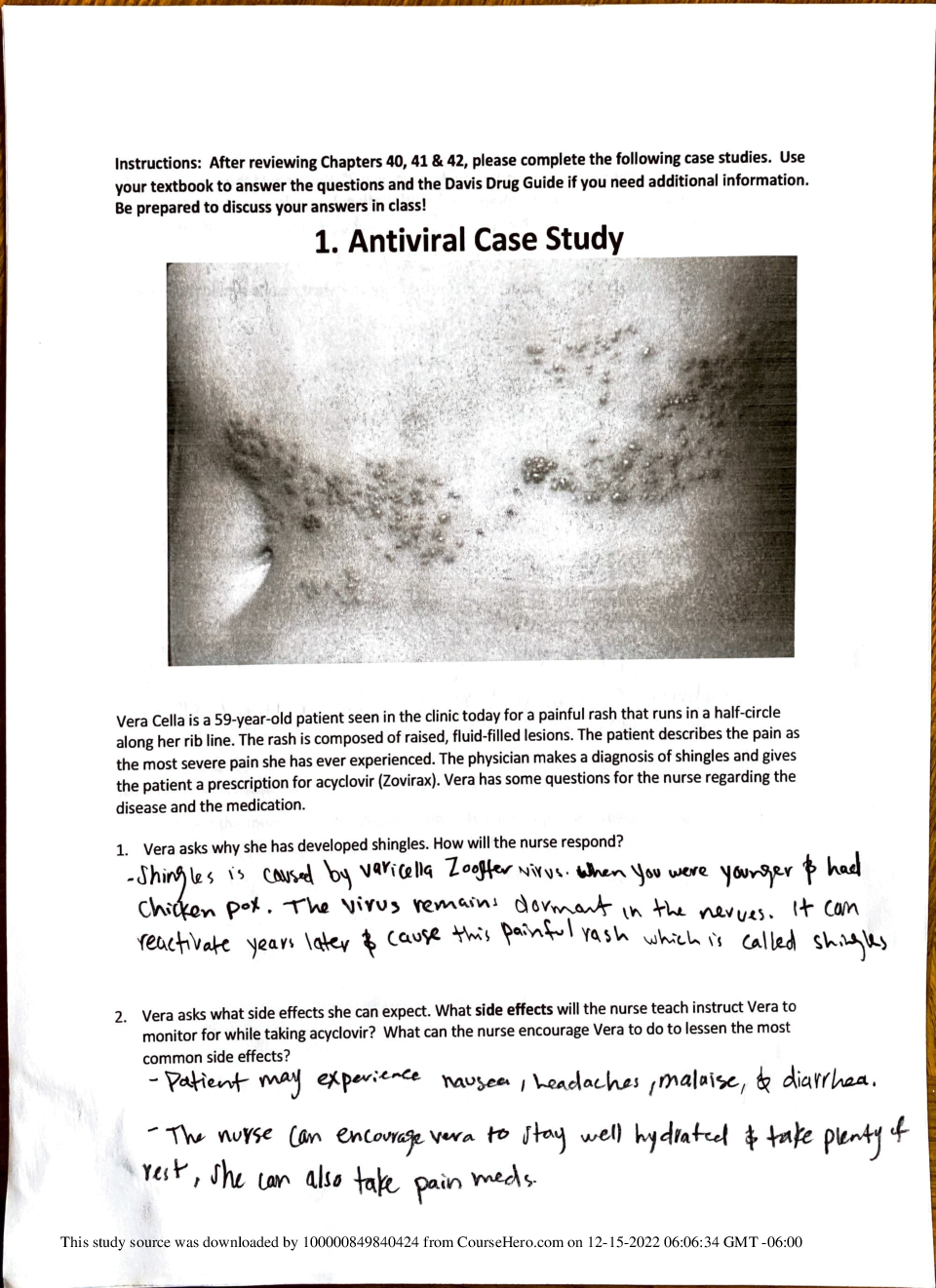


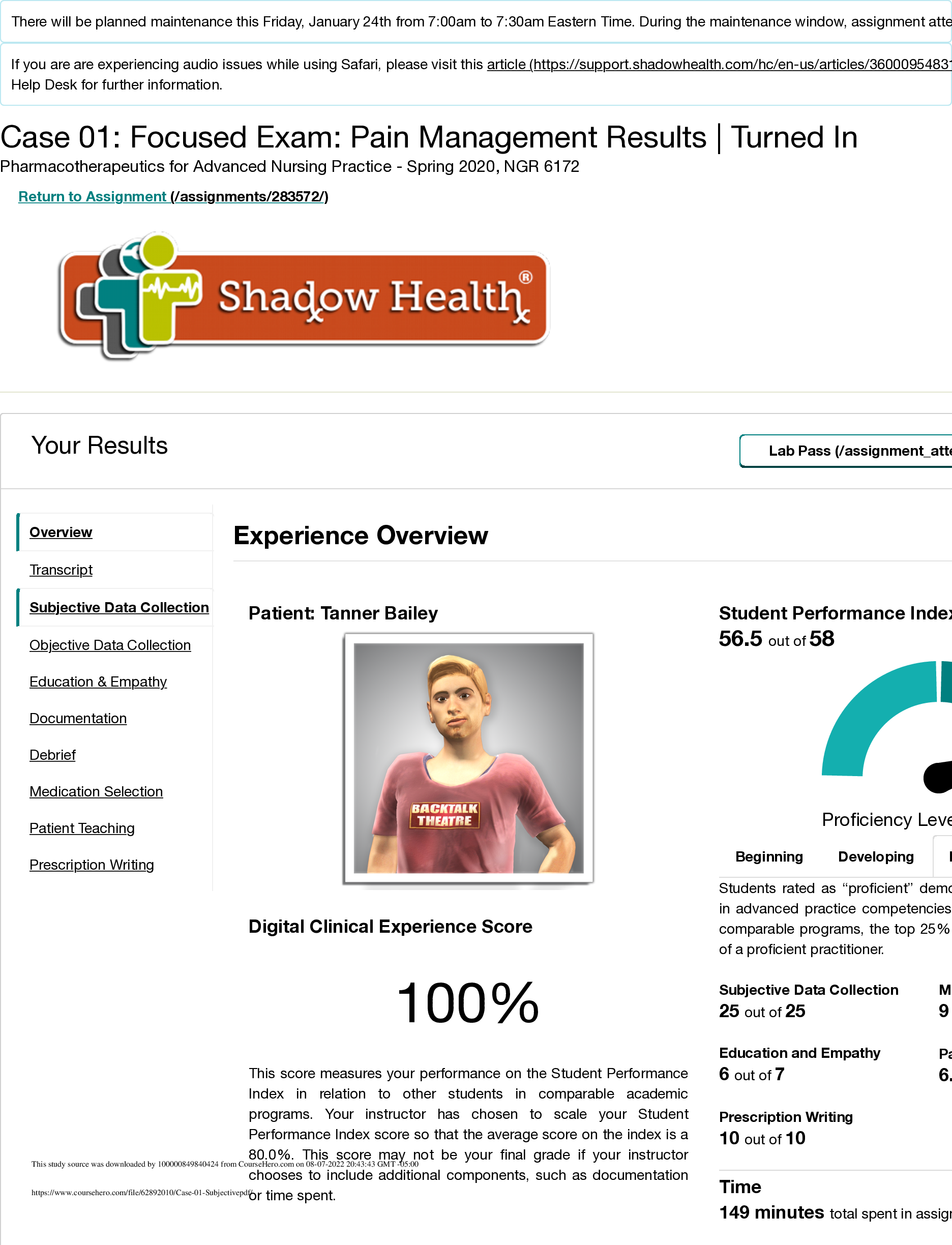


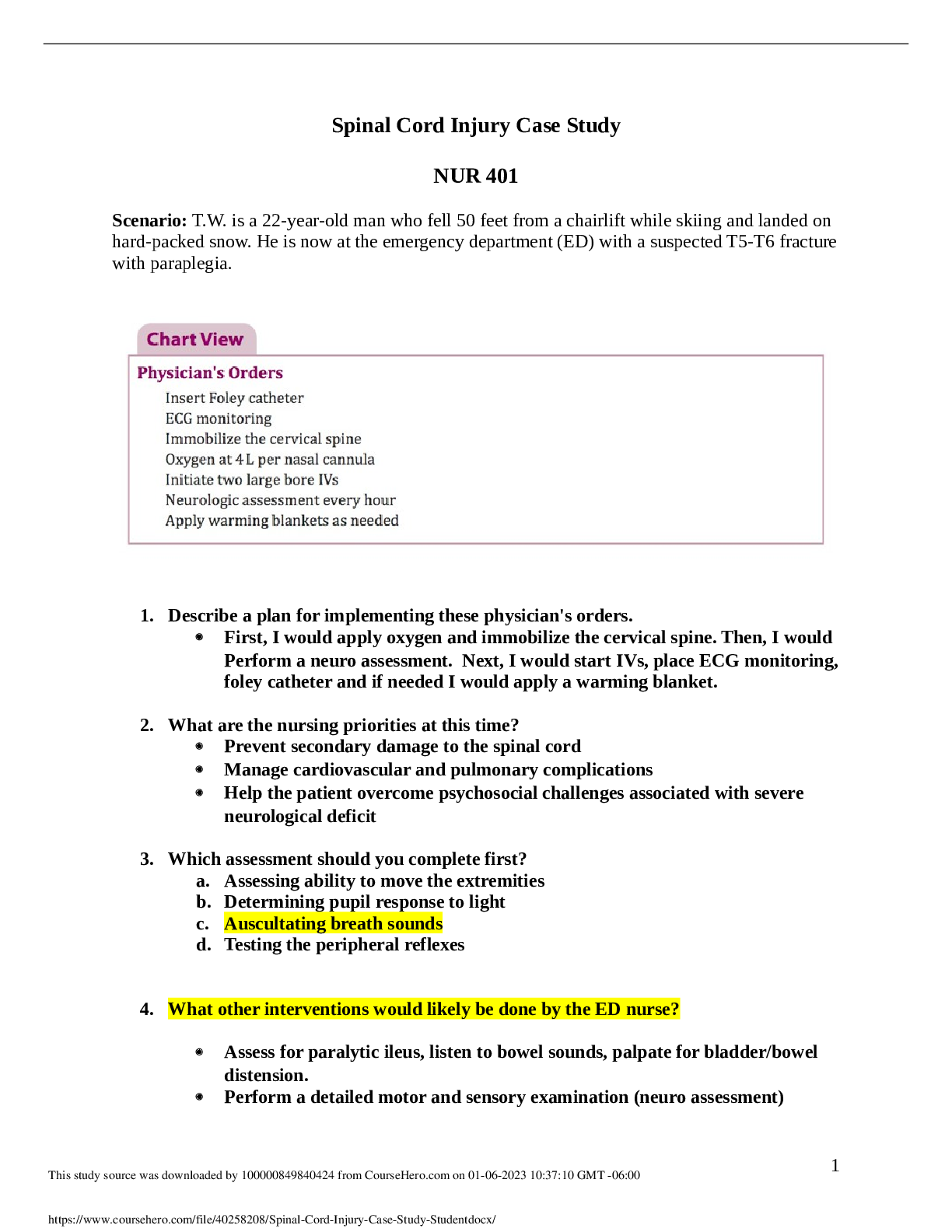






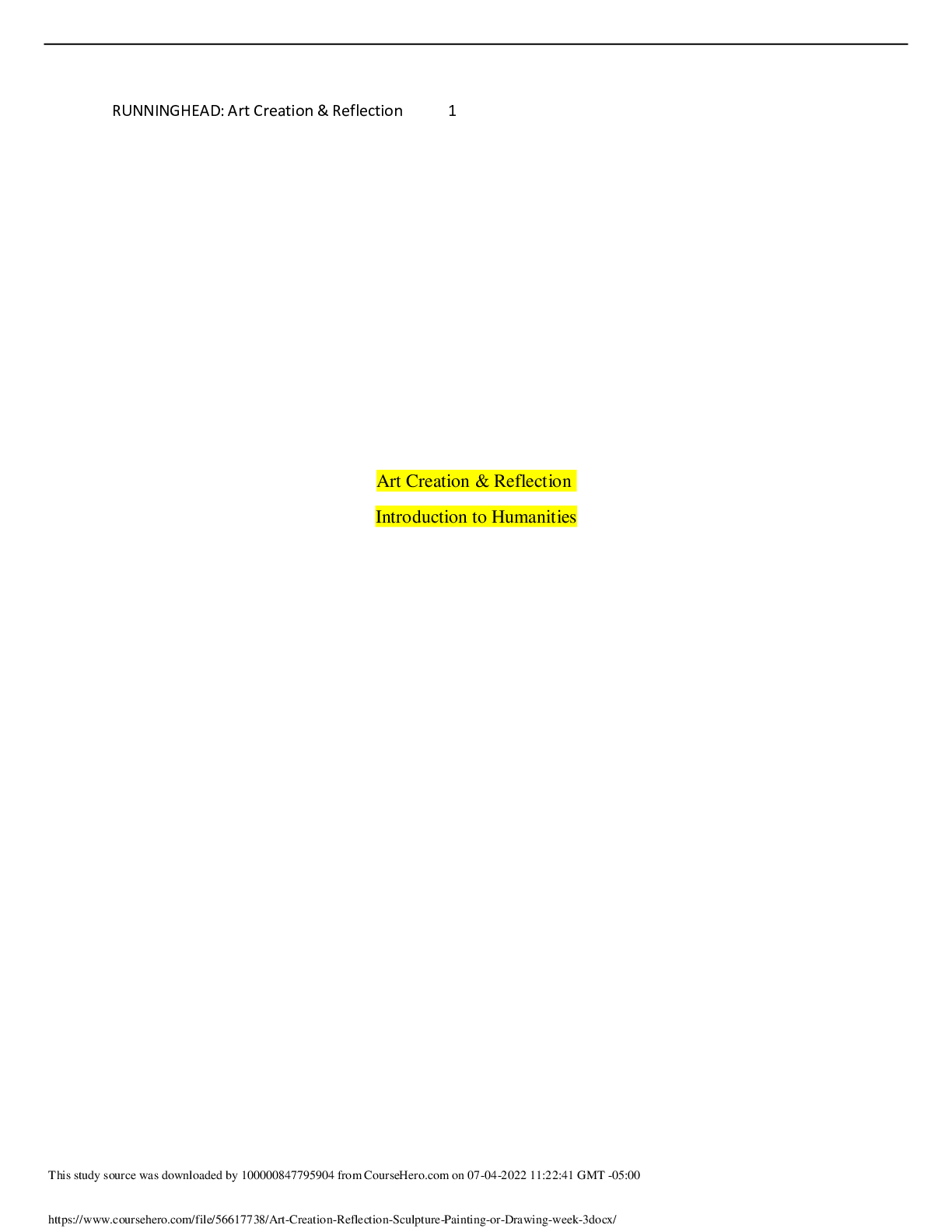







.png)

